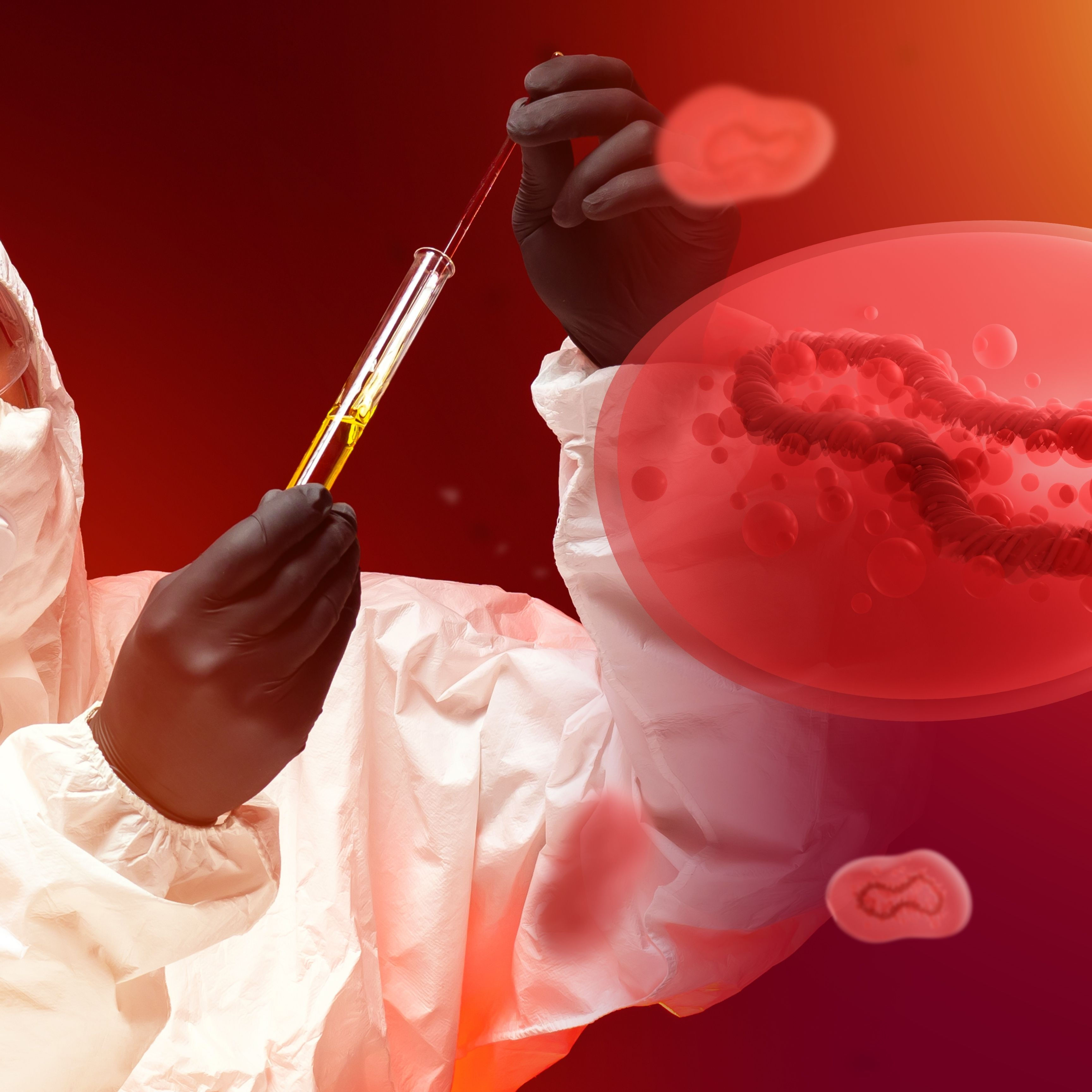
What is smallpox?
Smallpox, also known as variola or smallpox, is a viral infection that is always potentially life-threatening for humans. Different subtypes of the variola virus are possible triggers. This virus belongs to the genus of orthopoxviruses. Since 1980, smallpox is officially considered to be extinct. A vaccination programme was launched worldwide, so that the last cases of smallpox occurred in 1977.
Nowadays animal smallpox is coming into focus again and again. These are smallpox viruses that actually affect animals, but can also occasionally spread to humans. Although transmission from person to person is rare, it is possible. In addition, this course of the disease is less likely to be fatal. These smallpox are classified as potentially dangerous mainly in people with a weakened immune system. Monkeypox, which is usually only detected in West and Central Africa, has also repeatedly found its way to Europe in the recent past. In May 2022, more frequent cases of monkeypox infections were detected for the first time.
What are the symptoms of smallpox?
After an incubation period of about seven to 19 days, the first symptoms appear. Smallpox is divided into different forms that cause different symptoms depending on the type. The most important and best-known forms of smallpox are:
- True smallpox (Variola major),
- White smallpox (Variola minor,
- Haemorrhagic smallpox (Variola haemorrhagica or black pox),
- Monkeypox and cowpox.
The symptoms of true smallpox:
In the case of true smallpox, the disease begins insidiously in most cases . At first, there are unspecific symptoms, similar to a flu-like infection. These include fever of up to 40 degrees, headache, aching limbs and a general feeling of weakness. These early symptoms usually last about four days.
After that , the characteristic smallpox skin rash appears, which lasts for about one to three weeks. At first, pale red spots form on the arms and face , which itch enormously and very slowly develop into small nodules. Blisters develop that are filled with a fluid that is highly contagious. Over time, these blisters dry up and form a hard crust. During this phase of the disease, there is an undulating fever that can lead to confusion and disorientation. One third of all patients die from infection with true smallpox. A person who has survived the disease of real smallpox once is immune to it for a lifetime .
Symptoms of white smallpox
Infection with white smallpox is much quicker and milder. In this case, the symptoms are much less pronounced and only about one per cent of those affected die as a result of infection with white smallpox. However, anyone who has survived an infection with white smallpox has no protection against real smallpox.
Symptoms of haemorrhagic smallpox
Black smallpox is a particularly life-threatening form of smallpox . In this form of infection with the variola virus, the incubation period is a few days. There is severe, extensive bleeding of the entire skin and mucous membranes. The internal organs can also be affected. The majority of those affected die from the infection, many within the first two days.
Symptoms of monkeypox and cowpox
The two types of animal pox can also be transmitted to humans under certain circumstances. Compared to the other forms, however, they have much milder symptoms. Infected persons suffer from symptoms that are similar to flu. However, a skin rash still occurs . Sporadically, sharply circumscribed pustules appear. Depending on the variant, between one and 13 percent of those affected die from an infection with monkeypox.
How is smallpox diagnosed?
At the beginning of the disease, diagnosis is quite difficult, because the initial symptoms are very similar to a flu-like infection or a simple cold. At the latest when the typical skin rash can be seen, a doctor will arrange for further examinations. Smallpox can be reliably detected by a biopsy of the fluid in the formed blisters. Certain antibodies against smallpox can also be detected in the blood, so that a diagnosis can be made with certainty .
How is smallpox treated?
Since 2018, there has been an antiviral agent that can be used against smallpox. The active ingredient Tecovirimat, like the smallpox vaccine, is stored in larger quantities in case of a bioweapon attack with the smallpox viruses. An essential measure is the immediate isolation of the affected person. People who have contracted smallpox must no longer have any contact with other people. A smallpox vaccination can still be effective in the first four days after infection .
Doctors also advise the following measures:
- Physical rest,
- Bed rest,
- Drinking enough fluids,
- If you have a fever, take ibuprofen or paracetamol,
- Eating an energy-rich diet.
How can smallpox be prevented?
The most effective and safest protection is the smallpox vaccination. This is a classic live vaccine. This means that a functioning virus is injected. For this vaccination, different types of vaccinia virus are used. This is very closely related to the variola virus, the virus that causes smallpox. Because of the similarity, a vaccination against smallpox can also protect against cowpox and monkeypox. So far, approval has been obtained in the USA and applied for in Europe.
Is vaccination against smallpox still useful today?
Smallpox is considered to be eradicated nowadays, which is why it is hardly ever vaccinated against, or not at all . As a rule, the two smallpox vaccines that exist are used for people who come into contact with smallpox viruses , including laboratory workers. The WHO stores an enormous stock of the older vaccine. Likewise, the USA, Austria, Switzerland and Germany have a large reservoir should there ever be another smallpox outbreak.
